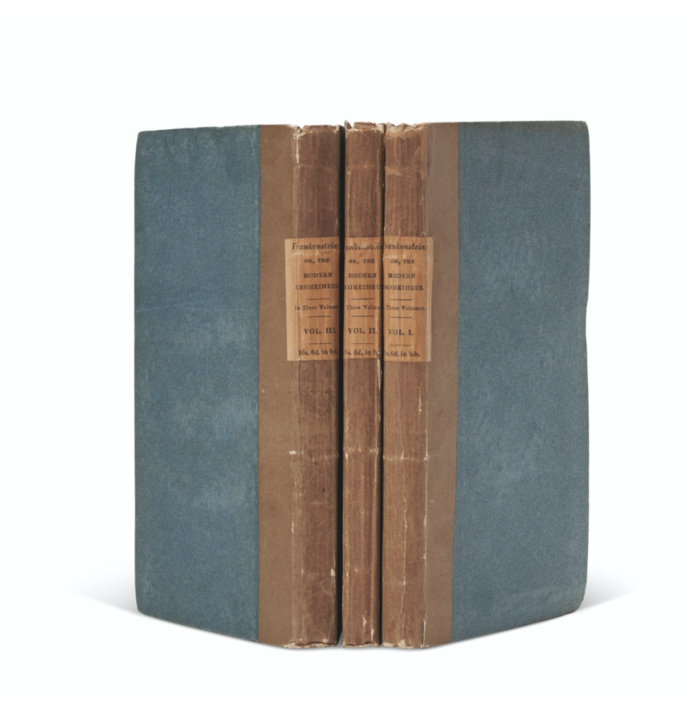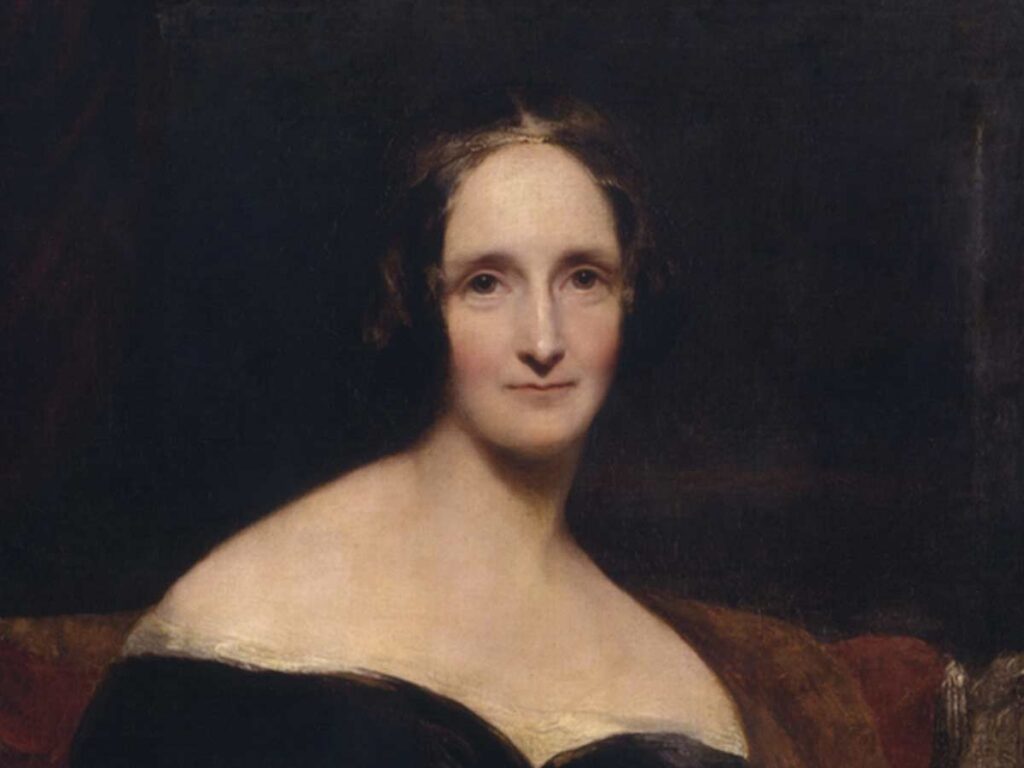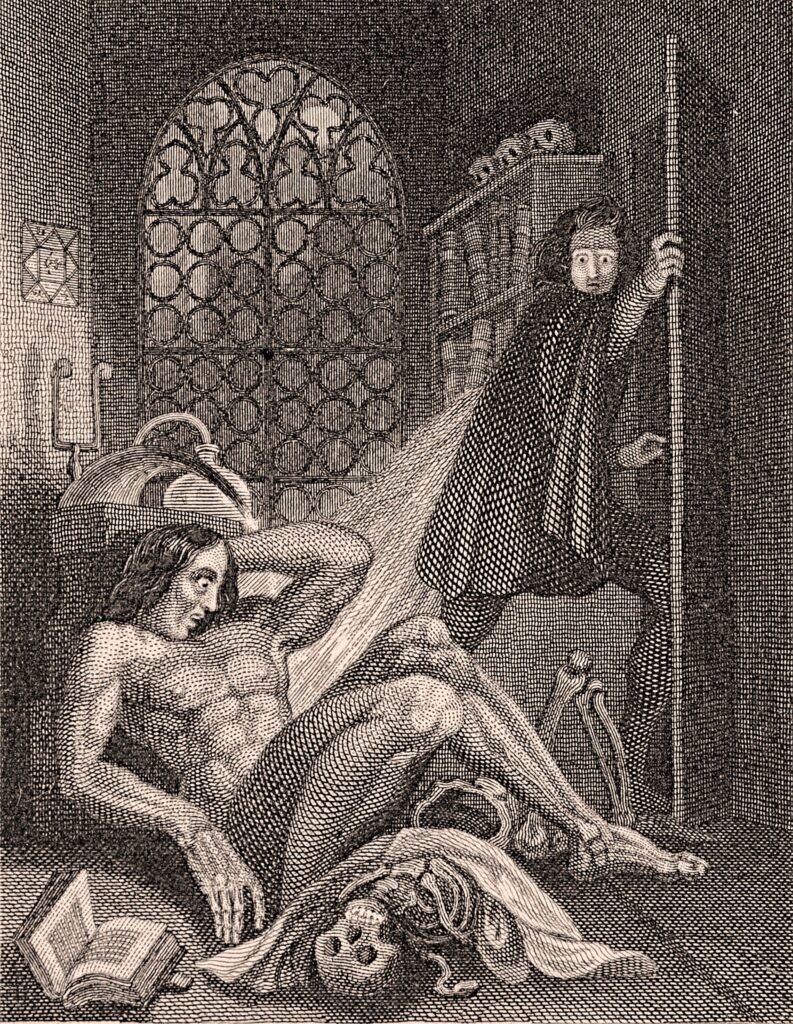
The first edition of Mary Shelley’s cult gothic novel Frankenstein surpassed expectations last week when it was sold at Christie’s for a whopping $ 1.17 million. The set of three volumes broke the auction record for a woman’s printed work, according to the statement. The pre-sale estimate of the lot ranged from $ 200,000 to $ 300,000.
As Alison Flood reports for the Guardian, the previous world record for a woman’s print was set in 2008, when the first edition of Jane Austen’s 1816 novel Emma sold for approximately $ 205,000.
Mary Shelley Frankenstein’s record-breaking copy is distinguished by the fact that it retains the original boards – the bluish-gray cardboards that cover each volume.
Nineteenth-century publishers used these disposable covers to bind and sell books, expecting new folios to eventually replace them with permanent covers.
“ Frankenstein by Mary Shelley is incredibly fragile and, as a result, very rare, so much a copy, especially in good condition, is highly desirable for collectors,” Christie’s spokesman told the Guardian. “Overall, this is a very strong market and we are seeing an increased demand for great examples of literary stars.”

Christie’s notes that this Frankenstein by Mary Shelley edition is the first of its kind to be auctioned since 1985. It is one of the dozens of rare first editions put up for sale by the auction house of antique book collector Theodore B. Baum.
Other works sold include copies of Bram Stoker’s Dracula (1897), Night and Day by Virginia Woolf (1919), and James Joyce’s Dubliners (1914). According to the statement, the total sales of the Baum collection were over $ 9 million.
Mary Wollstonecraft Godwin wrote the first draft of her groundbreaking novel in 1816 while on a trip to Lake Geneva with her future husband, the poet Percy Bysshe Shelley, and their friend, the famous poet Lord Byron.
Stuck at home in an unseasonably cold summer – following a catastrophic volcanic eruption in Indonesia – the writers competed to find out who could write the most compelling ghost story.
“I set out to invent a story,” Shelley later recalled, “… [for example] that would speak of the mysterious fears of our nature and awaken a thrilling horror — one that would make the reader afraid to look back, freeze the blood and speed up the heartbeat.”
One night, as Shelley was trying to sleep, it dawned on her. Inspired by her eerie surroundings and recent discussions of galvanism, which suggested scientists could use electricity to simulate life or reanimate the dead, the 18-year-old writer began writing a story about Victor Frankenstein, an obsessed scientist who creates a humanoid “creature” with dire consequences for both.
“I saw a pale student of the uninitiated arts kneel before what he collected,” Shelley wrote in the text. “I saw the hideous fantasies of a man stretched out and then, with some powerful engine running, showing signs of life and stirring in an alarming, half-alive movement.” (Viewers can view the original handwritten draft of Frankenstein by Mary Shelley, augmented by Percy’s linear edits, on the Internet at Oxford University’s Bodleian Library.)

The small London publishing house Lackington, Hughes, Harding, Mavor & Jones first printed Frankenstein by Mary Shelley: or Modern Prometheus in a limited edition of only 500 copies on January 1, 1818.
The first edition of Frankenstein by Mary Shelley was published anonymously but contained an unsigned foreword by Percy and a dedication to Mary’s father, the philosopher William Godwin. Shelley did not announce her romance until four years later when Frankenstein was adapted into a popular play.
Today, Frankenstein by Mary Shelley is considered the founding work of science fiction. “Frankenstein by Mary Shelley is a book that continually asks questions about where the limits are and how far to go, and what are the implications of what we do in the world,” said Gita Manaktala, editorial director at MIT Press, Kat Ashner of Smithsonian magazine in 2018.
However, at the time of publication, reviews of Frankenstein by Mary Shelley were mixed. Shelley herself was unhappy with the work because in her annotations she made it clear that at least one copy in the margins is kept in the collections of the Morgan Library and Museum.
In 1831, thirteen years after the first edition of Frankenstein, Shelley published a revised edition that included a revised first chapter and other narrative changes.
This 1831 text is the most widely read today, as noted by Genevieve Valentine for NPR in 2018. While the 1818 text is more supportive of Viktor Frankenstein’s actions, Valentine argued, the later version emphasizes the scientist’s arrogance in an attempt to change the natural state of the world.
Shelley also decided to remove the epigraph from John Milton’s 1667 epic poem about the Christian parable of original sin, Paradise Lost. The phrase, the question of the first biblical man, Adam, to God, opens the text of 1818: “I asked You, Creator, out of my clay / To mold me as a Man? / I asked you / To advance me from the darkness? “
























